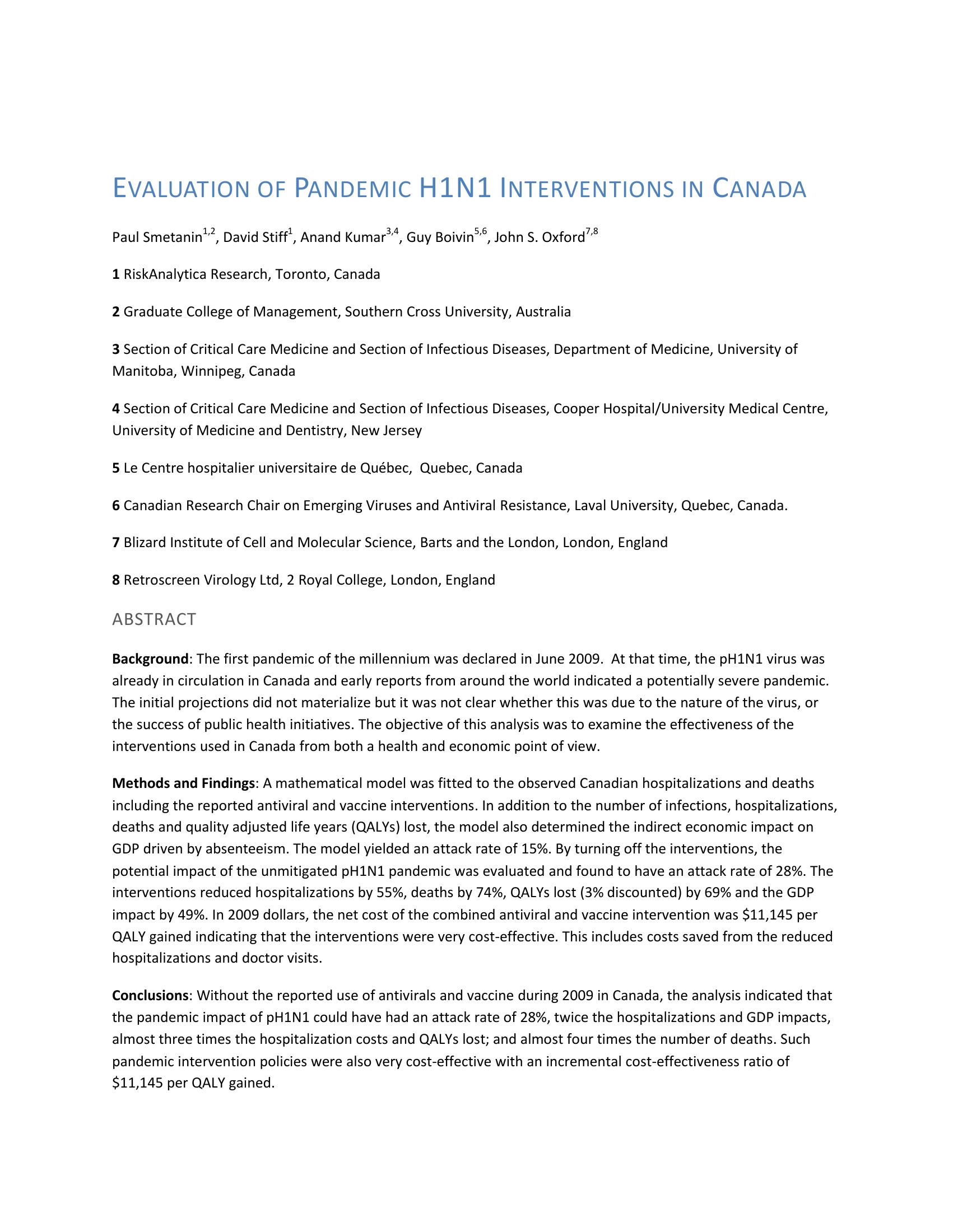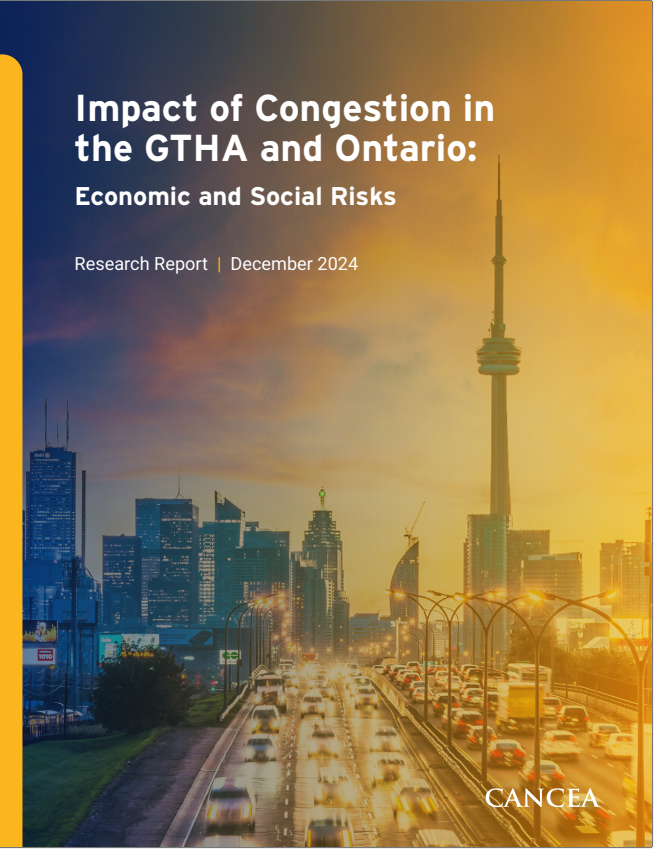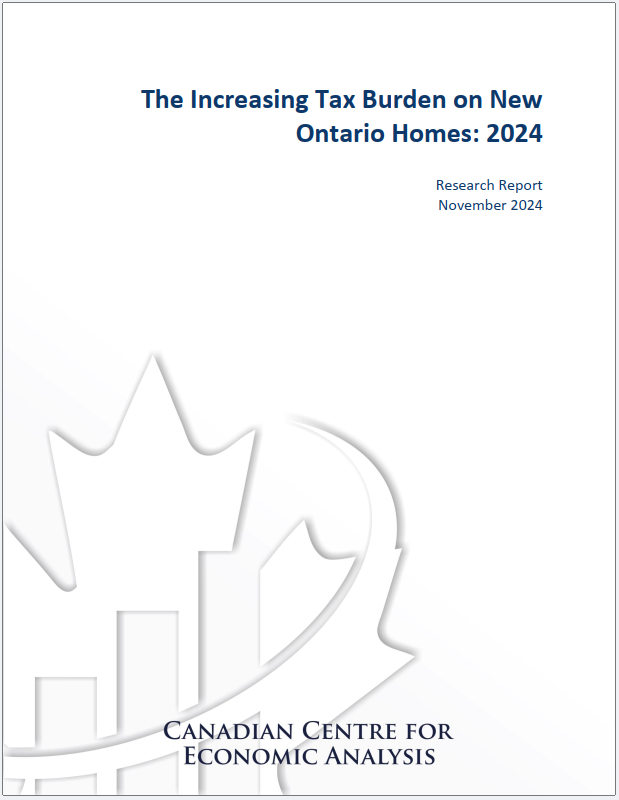Background:
The first pandemic of the millennium was declared in June 2009. At that time, the pH1N1 virus was already in circulation in Canada and early reports from around the world indicated a potentially severe pandemic. The initial projections did not materialize but it was not clear whether this was due to the nature of the virus, or the success of public health initiatives. The objective of this analysis was to examine the effectiveness of the interventions used in Canada from both a health and economic point of view.
Methods and Findings:
A mathematical model was fitted to the observed Canadian hospitalizations and deaths including the reported antiviral and vaccine interventions. In addition to the number of infections, hospitalizations, deaths and quality adjusted life years (QALYs) lost, the model also determined the indirect economic impact on GDP driven by absenteeism. The model yielded an attack rate of 15%. By turning off the interventions, the potential impact of the unmitigated pH1N1 pandemic was evaluated and found to have an attack rate of 28%. The interventions reduced hospitalizations by 55%, deaths by 74%, QALYs lost (3% discounted) by 69% and the GDP impact by 49%. In 2009 dollars, the net cost of the combined antiviral and vaccine intervention was $11,145 per QALY gained indicating that the interventions were very cost-effective. This includes costs saved from the reduced hospitalizations and doctor visits.
Conclusions: Without the reported use of antivirals and vaccine during 2009 in Canada, the analysis indicated that the pandemic impact of pH1N1 could have had an attack rate of 28%, twice the hospitalizations and GDP impacts, almost three times the hospitalization costs and QALYs lost; and almost four times the number of deaths. Such pandemic intervention policies were also very cost-effective with an incremental cost-effectiveness ratio of $11,145 per QALY gained.”











